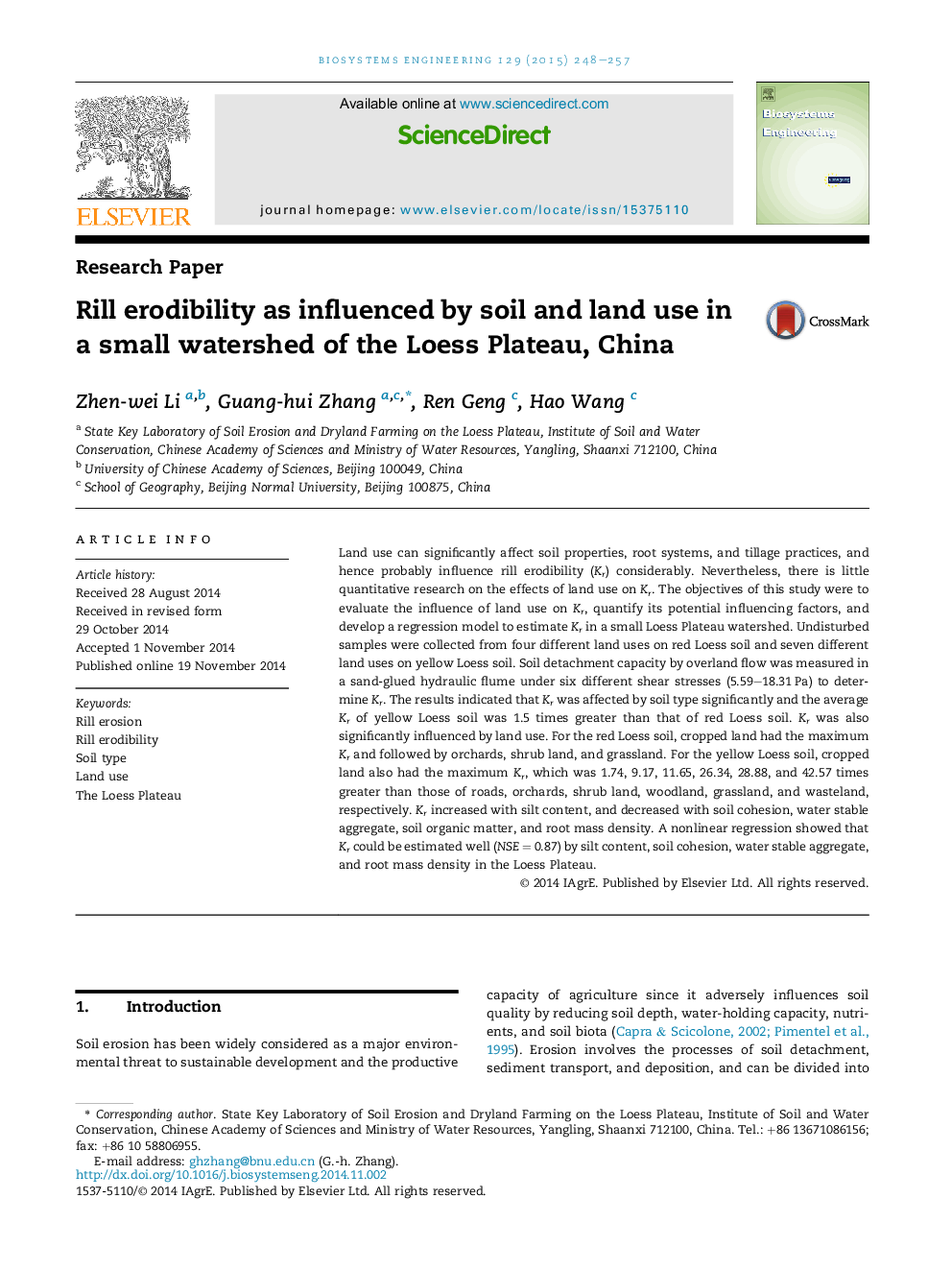| Article ID | Journal | Published Year | Pages | File Type |
|---|---|---|---|---|
| 1711068 | Biosystems Engineering | 2015 | 10 Pages |
•Land use significantly affects rill erodibility.•Potential factors influencing the variability in rill erodibility were quantified.•Rill erodibility could be well estimated by soil properties, and root mass density.•This study is helpful to simulate rill erosion in the Loess Plateau.
Land use can significantly affect soil properties, root systems, and tillage practices, and hence probably influence rill erodibility (Kr) considerably. Nevertheless, there is little quantitative research on the effects of land use on Kr. The objectives of this study were to evaluate the influence of land use on Kr, quantify its potential influencing factors, and develop a regression model to estimate Kr in a small Loess Plateau watershed. Undisturbed samples were collected from four different land uses on red Loess soil and seven different land uses on yellow Loess soil. Soil detachment capacity by overland flow was measured in a sand-glued hydraulic flume under six different shear stresses (5.59–18.31 Pa) to determine Kr. The results indicated that Kr was affected by soil type significantly and the average Kr of yellow Loess soil was 1.5 times greater than that of red Loess soil. Kr was also significantly influenced by land use. For the red Loess soil, cropped land had the maximum Kr and followed by orchards, shrub land, and grassland. For the yellow Loess soil, cropped land also had the maximum Kr, which was 1.74, 9.17, 11.65, 26.34, 28.88, and 42.57 times greater than those of roads, orchards, shrub land, woodland, grassland, and wasteland, respectively. Kr increased with silt content, and decreased with soil cohesion, water stable aggregate, soil organic matter, and root mass density. A nonlinear regression showed that Kr could be estimated well (NSE = 0.87) by silt content, soil cohesion, water stable aggregate, and root mass density in the Loess Plateau.
